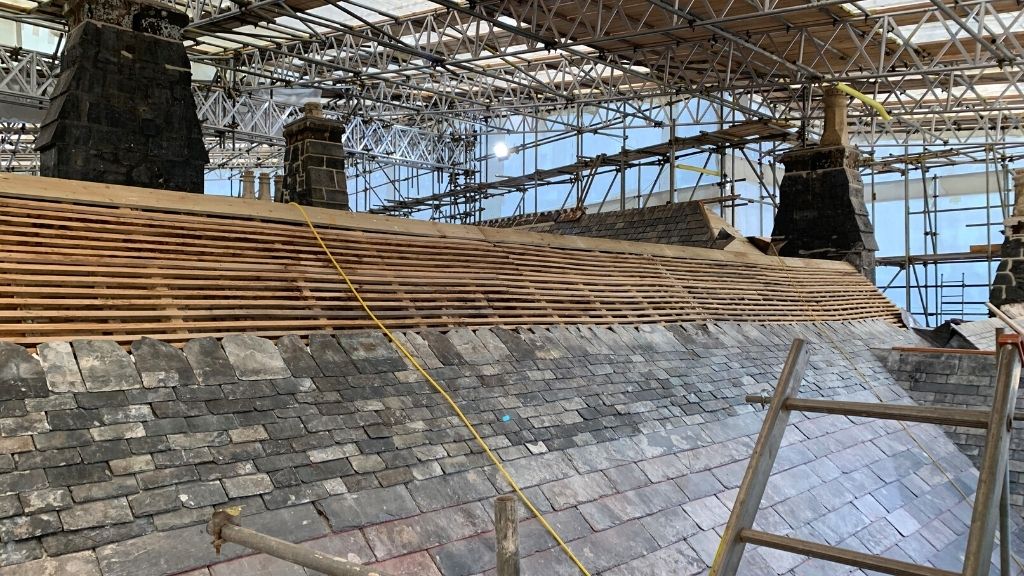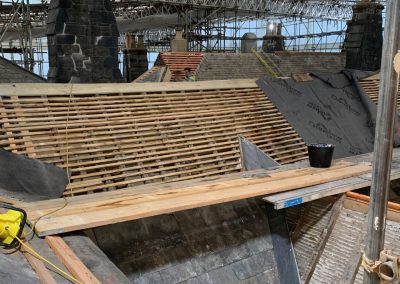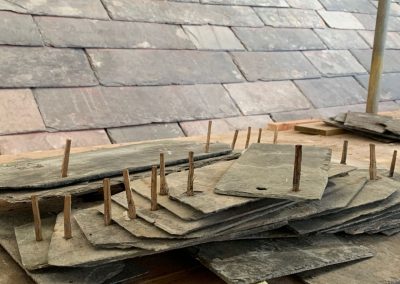Countdown begins for Schumacher College’s return to the Old Postern
The protective shroud and scaffolding, which has covered the Old Postern at Dartington for nearly two years, is soon to be removed as work on the roof nears completion.

The slate roof of the Old Postern
Builders are in the final stages of the intricate slate work on the historic 15th century building, some of which has been done using the traditional method of ‘pegging’. The roofers have taken care to group the different types of roofing slates in bands, as is traditional, many of which tell a story of their own.
In line with English Heritage’s guidance, many of the roof slates have been re-claimed from demolished buildings around Devon, the pinker ones reflecting the heather from Ashburton, on the edge of Dartmoor National Park and the bluer slates from Beesands, a fishing village on the south coast.
Head of Schumacher College Pavel Cenkl said the skill and craftsmanship used to restore the Old Postern had been “inspiring” to witness.
“It has reconnected our learning community with this beautiful building and it has it has woven together traditional building techniques with the local landscape.
“Both landscape and community are core to our mission, and as the Old Postern becomes available as a learning space again, it will be a place in which we can celebrate, explore, and live these connections together.”
Work began on repairs to the Old Postern back in January 2020, thanks to a generous donation of £2m, by a friend of Schumacher College. But the project has faced numerous challenges from the wild weather to a global pandemic and interrupted supply chains.
Now the scaffolding is due to be removed completely by the beginning of April and then internal restoration, such as painting and re-plastering, can begin.
The Old Postern, a medieval parsonage, was once home to the half-brother of Richard II and later to the celebrated botanical illustrator William Keble Martin.
Keble Martin painted a watercolour of every flower he could find in the British Isles for the iconic reference book Concise British Flora in Colour. It is believed he sketched the first flower for the book from one he saw growing on the Dartington estate.
The building was placed on the “Heritage At Risk Register” in 2018, which acknowledged the unique character of the building. It is hoped that when the building work is complete, the listing will no longer be necessary and it can be removed.
In the meantime our degrees and short courses have been taught in a range of beautiful learning spaces, indoor and out, across the Dartington estate. To find out more about studying here, explore our courses via this link.




